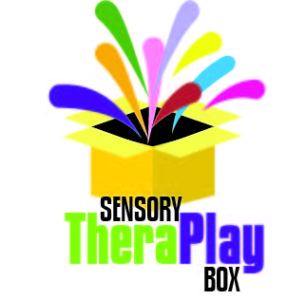
Loving and engaged parents can all agree on one thing: meeting children’s needs is of paramount importance, and parents will do almost anything to help their kids lead happy and healthy lives. This looks different in every family and for every child, but in every case, understanding a child’s temperament can be instrumental in helping them thrive socially and emotionally.
Each temperament type (explained below) has unique social and emotional needs. For example, a sanguine child may thrive on social interaction and positive feedback, while a melancholic child may need time alone to recharge. A choleric child may struggle with anger management, and by recognizing this tendency, you can implement coping strategies for managing their emotions.
With greater awareness, parents can help their child manifest his or her temperament in a balanced way by developing skills that will help them succeed in different situations.
The Four Temperaments Theory and Children’s Personalities
The Four Temperaments theory, developed by the ancient physician and philosopher Hippocrates, offers a valuable lens through which to understand your child’s personality, preferences, and needs. The theory suggests that in humans, there are four fundamental personality types: choleric, melancholic, sanguine, and phlegmatic.
- Choleric: characterized by strength, willpower, and a desire for control. Cholerics are natural leaders and are often successful in positions of power. They are confident, goal-oriented, and decisive. However, their strength can sometimes be perceived as aggression, and they may struggle with anger and impatience. Cholerics are also prone to being stubborn and may struggle with flexibility and adaptability.
- Melancholic: reflective, analytical, and detail-oriented. Melancholics are often creative and artistic, with a deep appreciation for beauty and aesthetics. They are often introspective and sensitive to the emotions of others. However, their tendency towards introspection and self-reflection can sometimes lead to feelings of sadness or depression. Melancholics may also struggle with perfectionism and may be overly critical of themselves and others.
- Sanguine: characterized by enthusiasm, sociability, and a love of life. Sanguines are often the life of the party and have a natural ability to connect with others. They are optimistic and tend to see the best in people and situations. However, their enthusiasm can sometimes be seen as superficial, and they may struggle with impulsivity and a lack of focus. Sanguines may also struggle with follow-through and may have difficulty sticking to long-term goals.
- Phlegmatic: calm, even-tempered, and easygoing. Phlegmatics are often diplomatic and have a natural ability to resolve conflicts. They are patient and tend to avoid drama and conflict. However, their easygoing nature can sometimes be seen as indecisiveness and lack of motivation. Phlegmatics may also struggle with assertiveness and may have difficulty standing up for themselves or advocating for their needs.

It’s important to note that these are generalizations and not everyone fits perfectly into one temperament type. Additionally, kids may exhibit different strengths and weaknesses within their temperament type depending on their unique personality traits.
How to Identify a Dominant Temperament in Children—and Parents
By identifying a child’s dominant temperament, parents can better understand their behavior, emotions, and reactions to sensory input. But what is the best way to determine whether a child is mainly choleric, melancholic, sanguine, or phlegmatic?
One approach is to look for examples of the temperaments in familiar figures or characters. It’s been suggested that the main characters in the Winnie the Pooh stories each exemplify one of the four temperaments.
The choleric personality comes to life in the character of Rabbit. Rabbit is fiery and outspoken, can be quick to anger, and tends to act as a leader in the group. Choleric children, similarly, will have strong opinions that they’re not afraid to voice, appear tough or even invulnerable, and require a soft touch to manage their fiery outbursts of passionate feeling.
Eeyore and Piglet are melancholic characters. They spend a lot of time reflecting on themselves, the world, and others, and frequently seem to be sad. For kids with melancholic personalities, feelings of worry and self-pity can be overwhelming. These children do well when they’re prompted to put themselves in others’s shoes, as this cultivates their strong capacity for sympathy and empathy.
Chatty, energetic, and optimistic Tigger is a perfect example of the sanguine temperament. Tigger is the life of the party, but is often depicted as “a little out there” and in his own world. Sanguine children similarly can struggle with focus and settling down in calm moments, and as such do best in uncluttered, orderly environments that have been tailored to avoid overwhelming them.
Finally, Winnie the Pooh himself is phlegmatic, which manifests in a demeanor that is calm and easygoing, but can verge into sluggishness and inertia. While children of phlegmatic temperament are less emotionally volatile than others, they sometimes require extra attention and prompting to do simple tasks and take care of themselves on a daily basis.
It’s important to note that parents have dominant temperaments, just like their kids. Using temperament to develop optimal strategies for families to thrive and connect requires a deeper understanding of the personalities on both sides—so parents, take a look at yourself as well!
Understanding Temperament Helps Meet Kids’ Sensory Needs
At Sensory TheraPLAY Box, we believe that understanding a child’s temperament is a key component in meeting their sensory processing needs.
By providing toys and tools that can engage and soothe different temperaments, we aim to support loving and engaged parents who are working hard to help their child thrive by matching their unique needs with tools and tactics for a happy life.

